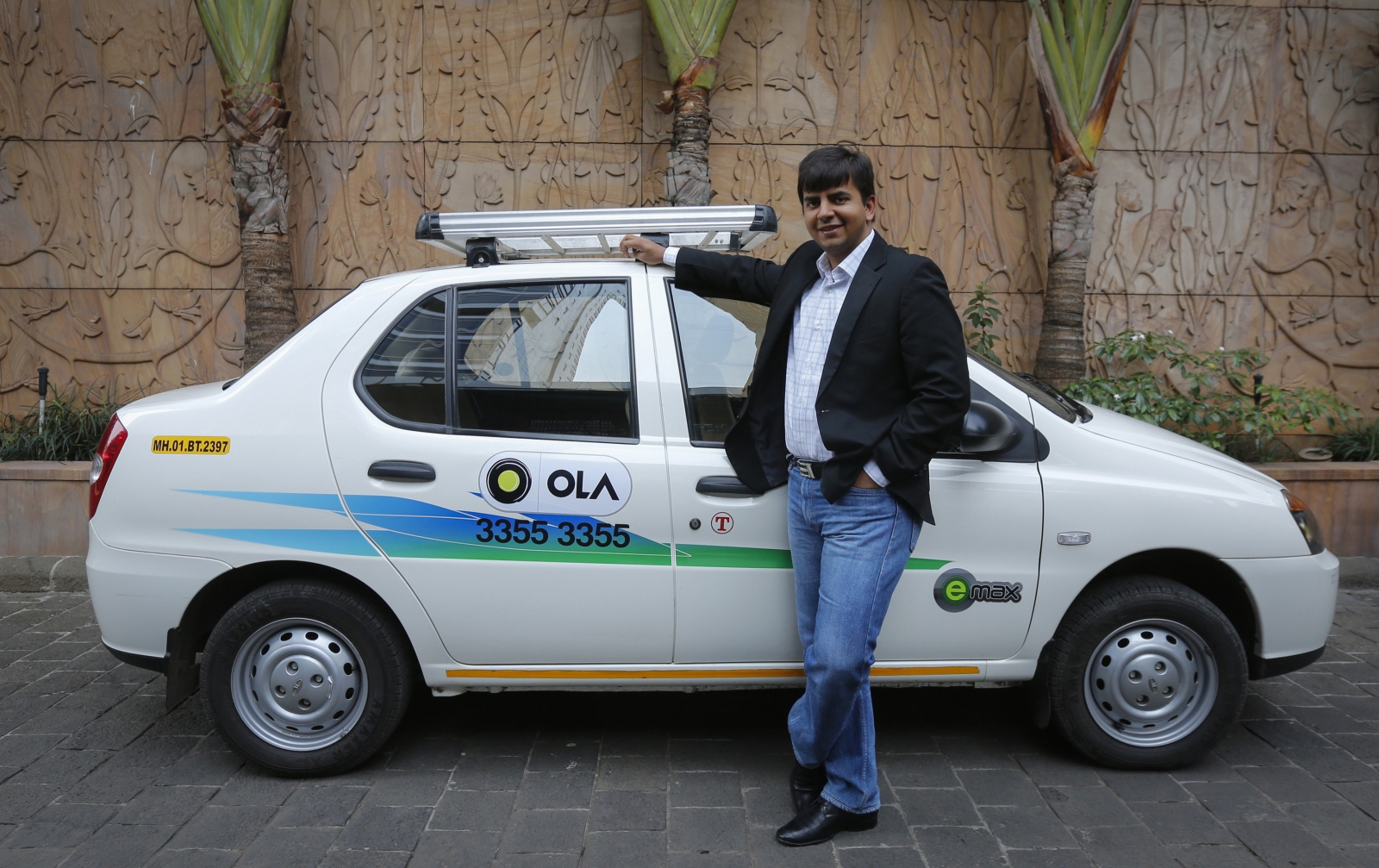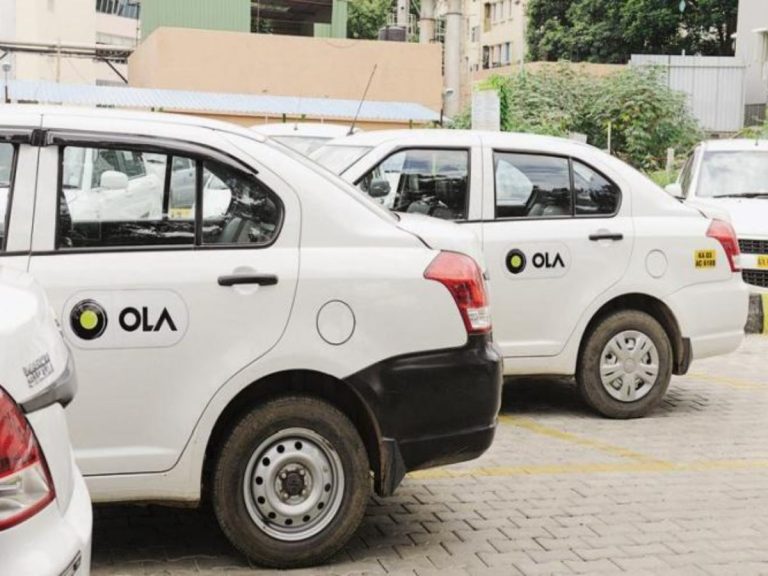Ola Reports Revenue of Rs 1,970 Crores Amidst Rs 1,522 Crore Loss in FY22

Ola Reports Revenue of Rs 1,970 Crores Amidst Rs 1,522 Crore Loss in FY22
Ola, a major ride-hailing company in India, reported a significant increase in revenue from operations for the fiscal year ending in March 2022 (FY22). According to its consolidated financial statement filed with the Registrar of Companies, Ola’s revenue surged by 100% to Rs 1,970 crore in FY22, marking a notable recovery from the previous fiscal year.
The company’s financial performance has been marked by fluctuations in recent years. Prior to the pandemic, in FY20, Ola’s revenue stood at Rs 2,662 crore. However, the subsequent fiscal year, FY21, saw a sharp decline to Rs 983 crore, as the COVID-19 pandemic and associated lockdowns severely impacted its operations.
The financial statement reveals the impact of pandemic-led lockdowns and restrictions on Ola’s operations during FY22. Despite these challenges, Ola managed to double its revenue, reflecting its adaptability and efforts to overcome the adverse circumstances. The delayed filing of the financial statement could likely be attributed to operational disruptions caused by the pandemic.
Ola’s ability to recover and achieve substantial revenue growth in FY22 underscores its resilience and ability to navigate through difficult market conditions. The financial data provides valuable insights into Ola’s journey and efforts to rebound from the pandemic’s impact as of March 2022.

Ola has established a diverse range of business verticals, encompassing various sectors such as mobility, financial services, international cab hailing, used car transactions, and food-related services, including cloud kitchens and food delivery.
Among these verticals, the ride-hailing business continues to be a significant contributor to Ola’s revenue. In FY22, Ola’s ride-hailing operations accounted for approximately 61% of its total revenue, amounting to Rs 1,208.6 crore. This marked a substantial increase of 78.5% from the Rs 677 crore generated in the previous fiscal year, FY21. Alongside ride hailing, Ola also ventured into the realm of financial services, generating revenue of Rs 95.4 crore in FY22. The remaining portion of its revenue was derived from the company’s other verticals.
Ola’s diverse portfolio of revenue sources underscores its strategic approach to establishing a presence across various sectors. This diversification allows the company to tap into multiple revenue streams and adapt to changing market dynamics. The impressive growth in revenue from the ride-hailing business despite challenges posed by the pandemic highlights Ola’s resilience and ability to seize opportunities within the mobility sector.
In addition to its operating income, Ola also generated Rs 149.53 crore from non-operating sources, encompassing activities such as marketing fees, data charges, and subscription income, among others. This diverse income stream contributed to the company’s overall revenue, which amounted to Rs 2,120 crore for the fiscal year FY22.
When examining its expenditure, Ola allocated Rs 588 crore to vehicle running expenses, constituting 17.5% of the total expenditure in FY22. This category witnessed a significant surge of 2.3 times compared to the Rs 254.7 crore spent in FY21, indicating the impact of increased operational activities and associated costs.

The company’s employee benefit expenses also experienced a notable increase, rising by 26.6% to Rs 552.5 crore in FY22, compared to Rs 436.3 crore in the previous fiscal year, FY21. This uptick in employee-related costs underscores the company’s commitment to maintaining and growing its workforce, even amidst the challenges posed by the pandemic and the evolving business landscape.
Ola encountered a significant rise in its cost of materials, which escalated over 20 times to reach Rs 501.7 crore in FY22, compared to the comparatively lower figure of Rs 23.34 crore in FY21. However, the specific nature of this expense remains unclear, and further clarification has been sought from the company to shed light on this aspect.
Expenses related to information technology and advertising & promotions demonstrated notable increases, with a surge of 43% and 89% respectively, amounting to Rs 282 crore and Rs 255.65 crore in FY22. Ola’s expenditure also included various other categories such as manpower supply, payment gateway, delivery, workshop, and associated costs. Consequently, the company’s overall expenses witnessed a substantial rise of 67.5%, reaching Rs 3,362 crore in FY22 from Rs 2,007 crore in FY21.
Despite Ola’s expansion in scale, its financial performance saw a growth in losses by 36.4%, with losses amounting to Rs 1,522 crore in FY22 compared to Rs 1,116 crore in FY21.

Breaking down the performance across segments, Ola’s ride-hailing business reported losses (EBITDA) of Rs 101 crore during the period, while the financial services segment registered a loss of Rs 1.59 crore. Under other verticals, losses (EBITDA) of Rs 725.5 crore were incurred. The company also accounted for Rs 280.5 crore worth of exceptional items as adjustments for impairment loss reversal, further contributing to its total losses of Rs 1,522 crore in FY22.
Ola’s accumulated losses continued to mount, reaching Rs 19,474 crore during the fiscal year FY22. This financial snapshot reflects the challenges and investments faced by the company as it strives for growth and expansion in various business verticals.
Ola’s cash outflows stemming from operations experienced a significant deterioration, surging by 67% to reach Rs 934 crore in FY22. The company’s EBITDA margin stood at -39.06%, while its return on capital employed (ROCE) registered at -14.36% during the same year. At a unit level, Ola’s expenditure amounted to Rs 1.71 for every rupee of operating income earned in FY22.
Amidst a trend of delayed financial reporting among late-stage companies for FY22, Ola has joined the ranks. Byju’s, another notable player, is yet to file its FY22 financial numbers. In a similar instance, Deloitte resigned as the auditor of Byju’s due to the company’s failure to produce its financial statements for the fiscal year ending March 2022.

The valuation trajectory for Ola does not present a positive picture either, as evidenced by continued downward adjustments. Vanguard Group, one of the backers, marked down the company’s valuation by 35% to $4.8 billion in May this year, from its peak valuation of $7.4 billion. More recently, the firm further devalued Ola by 27%, bringing it down to approximately $3.5 billion.
Ola’s primary competitor in India, Uber, experienced a relatively complex revenue situation. Its Indian entity, however, reported a 7.3% rise in operating revenue to Rs 397 crore in FY22 from Rs 370 crore in FY21. According to data from Fintrackr, Uber India’s local arm managed to reduce its losses by 35.3%, decreasing from Rs 334 crore to Rs 216 crore.
The cab aggregator market in India has proven to be persistently challenging for profitability, despite the passage of several years. Ola, holding the position of the dominant market leader, confronts the formidable responsibility of steering the industry toward a sustainable trajectory. However, many of the lofty promises that accompanied the entry of such firms have failed to materialize. Despite initial pledges to alleviate road congestion, reduce pollution, offer reliable transportation alternatives, and generate quality employment for thousands of driver “partners,” substantial gaps still persist.
The market landscape has undergone significant transformations, particularly with the emergence of new players like Blusmart, who have adopted an all-electric fleet strategy. These players are strategically positioning themselves to build and manage charging networks, anticipating the notable rise in electric vehicle penetration by around 2025.

Numerous questions surrounding long-term viability remain unanswered. Yet, the most poignant question is whether the absence of the firm would leave a noticeable void. Unfortunately, the answer to this question might not provide much reassurance to Ola or its current investors.




